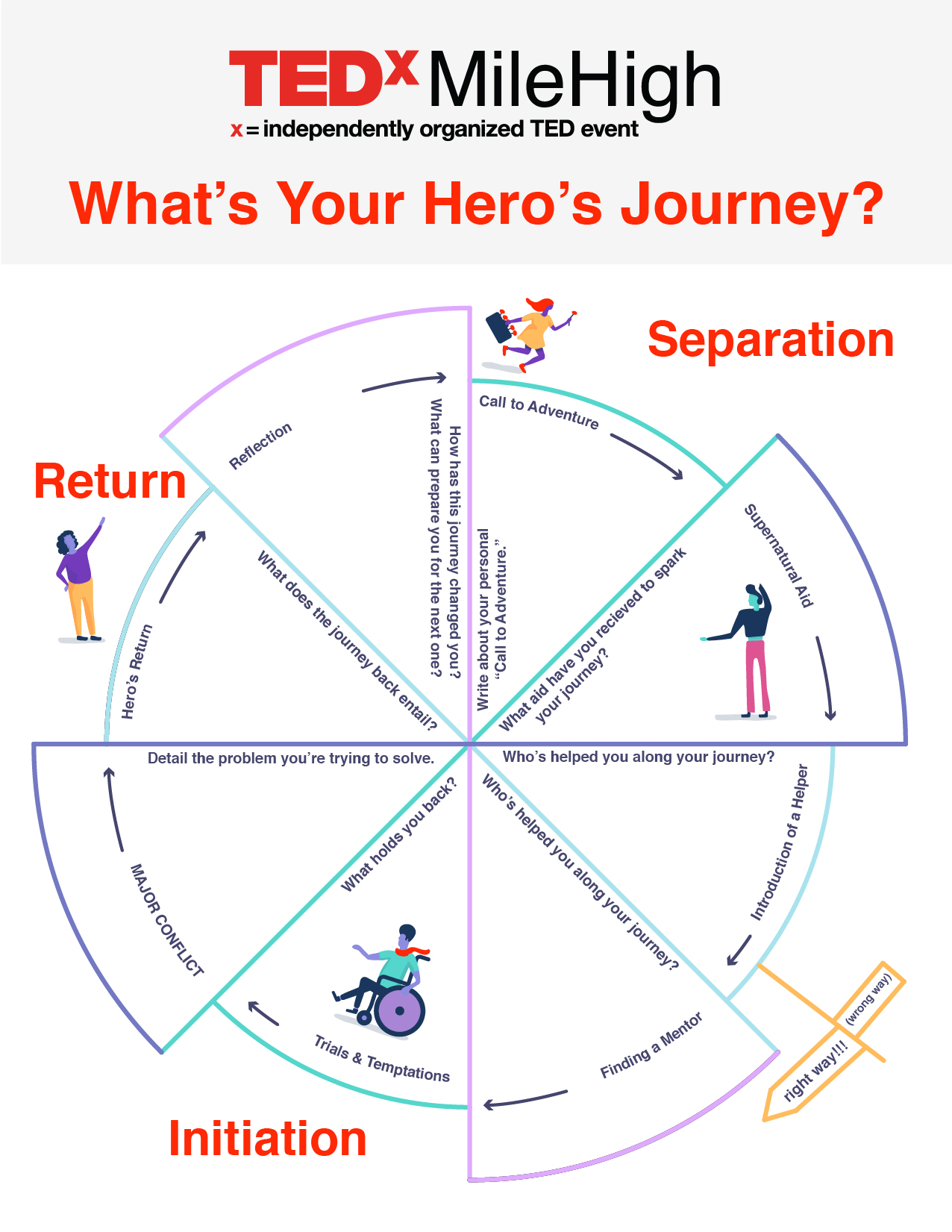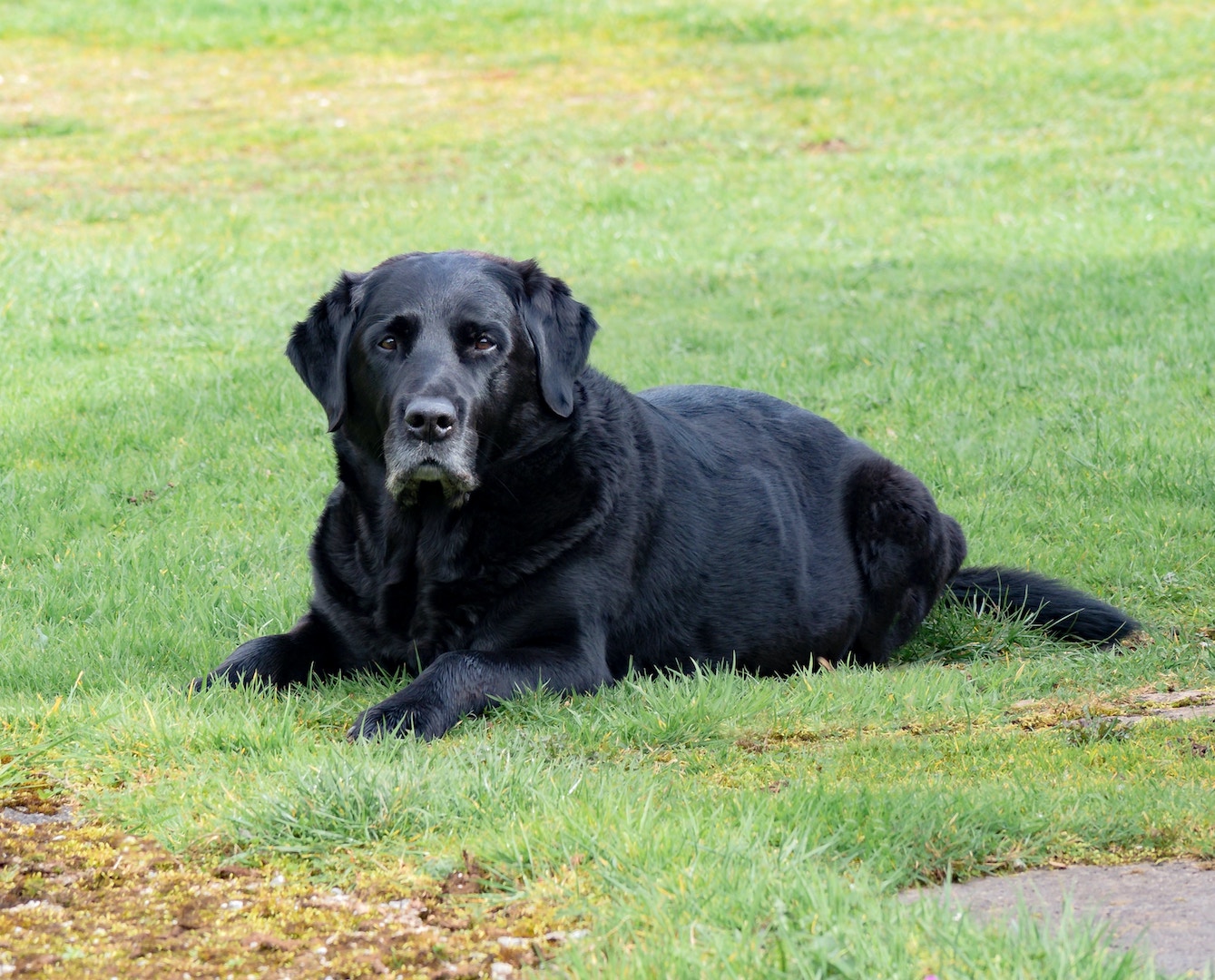Think of the last movie you watched. Think of everything that happens in this film. Think about the characters, plot, conflict, and ending. Now think of a different movie or even a book. Think about the same elements. Do you notice a trend? Yes, all stories are different and have different characters and outcomes, but have you noticed how most characters in a story follow a similar path? This path— this overlaying arc— is called the Hero’s Journey. Joseph Campbell first introduced this term in 1949, but the hero’s journey archetype has a longstanding place in storytelling.
Essentially, every character, whether in a book or a film, follows the same path and encounters three fundamental experiences along the way— separation, initiation, and return.
This is the beginning of our Hero’s Journey series where we will explore the archetype and how it shows up in our everyday lives.
As we lead up to TEDxMileHigh’s Summer 2020 event, Journey, discover that this journey is more relatable than you think—and that you may be the hero or heroine of your own journey.
The Hero’s Journey Archetype
So what exactly are we talking about here? We are diving into and dissecting the most basic form of storytelling, the arc that can be laid over any plotline and match it exactly, more or less. We’re talking about how Harry Potter receives his Hogwarts letter and goes on this massive quest to ultimately defeat Lord Voldemort and save the wizarding world. Marlin travels the entire Pacific Ocean, meets Dori and some sharks along the way, and finds Nemo. Luke Skywalker trains with Master Yoda, discovers who his father is, and blows up the Death Star.

All of these stories, every story, follow this hero’s journey archetype. It is the ultimate narrative archetype. And, you can break them all down into three basic points.
Separation
Whether they ask for it or not, something happens to the protagonist, or hero, that separates them from their ‘normal’ mundane world. This event, also termed the “call to adventure,” is the start of their journey, and it can manifest in different ways.
In the hero’s journey, drawn out by Campbell in The Hero with a Thousand Faces, there are several sub-points that occur along the hero’s journey that accompany the three main encounters. In the separation stage, the hero receives some kind of aid to push them to the threshold of their adventure. This aid can be the discovery of supernatural powers or the hero’s realization that they are not totally who they think they are.
For example, Harry Potter’s call to adventure came bursting through the door on his 13th birthday in the form of Rubeus Hagrid and his acceptance letter from Hogwarts. Harry discovers and fully embraces his wizarding powers and thus is pushed to the threshold of the next part of his hero’s journey: the initiation.
Initiation
This stage of the hero’s journey archetype takes up the bulk of the journey. Throughout this stage, the hero meets several sub-points along the way including the introduction of a helper, a mentor, and the trials and temptations that eventually lead to a major conflict.
A classic example of this stage is Dorothy’s yellow-brick road journey to find the Wizard of Oz. Glenda, her mentor that she meets when she first lands in Oz, provides Dorothy with an answer to her problem (i.e., getting back home to Kansas) and aids her along the way. She meets helpers like the Scarecrow, the Tin Man, and the Lion. On her journey, Dorothy also runs into conflict with the Wicked Witch of the West.
A few flying monkeys and a conveniently placed water bucket later, Dorothy resolves, or melts, her conflict and is set to embark on the final part of her journey: the return.
Return
This is the end of the hero’s journey. *Spoiler alert* Lord Voldemort dies, the Death Star blows up, and Dorothy makes it back to her family in Kansas. However, this resolution goes deeper than just a happy homecoming. In this stage, the hero returns but has changed. They have learned valuable information about themselves and the world around them.
In some cases, the hero’s journey is not complete unless this knowledge is shared. For example, Luke Skywalker defeats the Dark Side but is also left with the responsibility to continue to teach and share the ways of the Jedi. Dorothy’s lesson is more personal. She learns that there is adventure out there over the rainbow, but she shouldn’t take her current life or family for granted.
The Hero’s Versus the Heroine’s Journey
The hero’s journey archetype is similar across seemingly every example. However, how does the journey differ for a female character?
Author Maureen Murdock has examined and written about a key difference in her work The Heroine’s Journey: A Woman’s Quest for Wholeness. In her response to Campbell’s initial publication of the hero’s journey, Murdock outlined the separate experience the contemporary women embark on in their own heroine’s journey.
The three points along the journey are still the same. However, each stage consists of a deeper level of overcoming the expectations assumed by society. Essentially the journey “involves the healing of the wounding of the feminine that exists deep within her and the culture,” says Murdock.
Returning to our Wizard of Oz example, Dorothy embarks on the quintessential heroine’s journey. During the separation stage, she has to overcome the expectations that the rest of her life will be spent on her family’s farm. Society’s expectations are that she will continue to support her uncles and follow in her aunt’s footsteps. When she finally receives the adventure she is longing for, Dorothy has to overcome the notion that she can’t complete this journey on her own. She meets helpers along the way, but rather than depending on them, they depend on her to help, thus reversing society’s view of women.
Upon her return, Dorothy learns that her life can be different and that she does not need to depend on her uncles. She can live her own life and have her own adventure all while still appreciating her family.
Are You a Hero or Heroine?
So, maybe you’ve read through these stages and are thinking ‘That’s great! Why should I care?’ Or maybe you’ve heard of the hero’s journey archetype before or you’ve at least noticed the trend in your favorites books or movies, but you don’t really see why it’s important.
The hero’s journey is important because it’s personal.
We are all the heroes of our own lives. That is, we are the protagonist in our own story— we are the main character. We are all on our own hero’s journey. Fictional characters are based on human experiences, and this time, that experience is ours. It’s our lives.
We are all in different stages of this journey but are on it, or will be on it soon. It’s important to understand where you are in your life in order to see where you are going. Maybe you’re in the midst of massive conflict and it seems endless and impossible. The hero’s journey tells us that this stage of your life is temporary and the next stage will be one of learning and resolution.
Maybe you’re hearing that call to adventure or an opportunity has presented itself and you’re unsure of what to do. The hero’s journey tells you to take that leap. Cross that threshold and discover your path, but be prepared for some conflict along the way.
The hero’s journey is important because it is a map, a cheat sheet, to life. Whether you wield a lightsaber or not, we are all on this same journey. And knowing where you are will give you a glimpse into where you are headed.
Stay Tuned
The hero’s journey is relatable and personal. We all find ourselves on some part of the path eventually. But what happens when you deviate from that path? Where are you on your path and who are the important characters in your journey? Stay tuned. We will explore the details of the hero’s journey archetype and discover just how relatable it is.
TEDxMileHigh is gearing up for its next event: Journey. This summer, we will explore the individual journeys that form societies, advance technologies, and inspire movements. If this article sparked your interest, and if you’re looking to dive deeper into your own personal life journey, join us on June 27th.


















